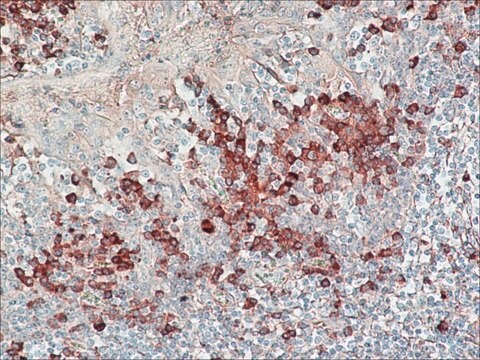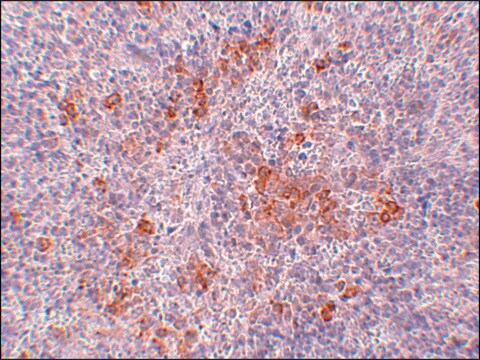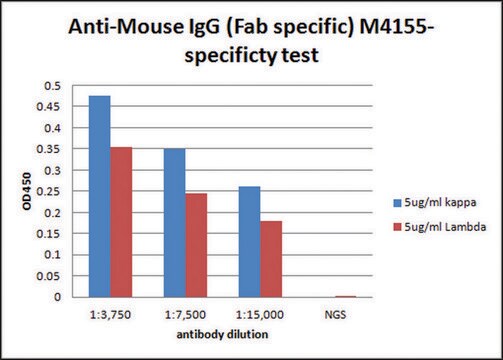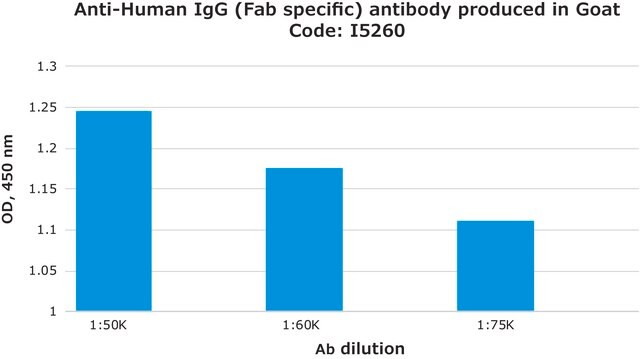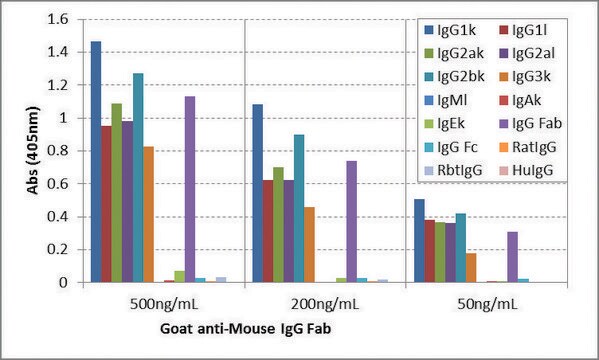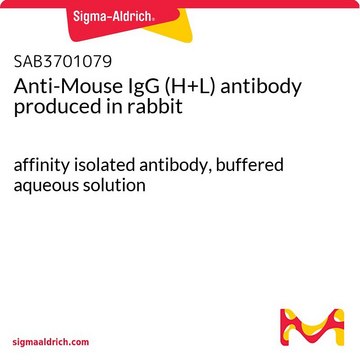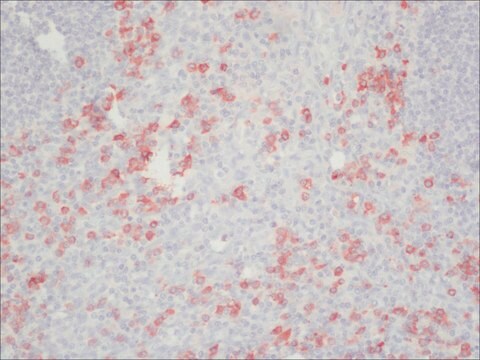SAB4200791
Anti-Human IgG (Fab specific)-Peroxidase antibody, Mouse monoclonal
clone GG-6, purified from hybridoma cell culture
Sinônimo(s):
Anti-Human immunoglobulin G
About This Item
Produtos recomendados
fonte biológica
mouse
Nível de qualidade
conjugado
peroxidase conjugate
forma do anticorpo
purified from hybridoma cell culture
tipo de produto de anticorpo
primary antibodies
clone
GG-6, monoclonal
Formulário
lyophilized powder
reatividade de espécies
human
concentração
~2 mg/mL
técnica(s)
direct ELISA: 1:16,000-1:32,000 using 2.5 μg/ml human IgG for coating.
Isotipo
IgG1
Condições de expedição
dry ice
temperatura de armazenamento
−20°C
modificação pós-traducional do alvo
unmodified
Descrição geral
Imunogênio
Aplicação
Ações bioquímicas/fisiológicas
forma física
Outras notas
Não está encontrando o produto certo?
Experimente o nosso Ferramenta de seleção de produtos.
Palavra indicadora
Warning
Frases de perigo
Declarações de precaução
Classificações de perigo
Skin Sens. 1
Código de classe de armazenamento
12 - Non Combustible Liquids
Classe de risco de água (WGK)
WGK 2
Ponto de fulgor (°F)
Not applicable
Ponto de fulgor (°C)
Not applicable
Escolha uma das versões mais recentes:
Certificados de análise (COA)
Não está vendo a versão correta?
Se precisar de uma versão específica, você pode procurar um certificado específico pelo número do lote ou da remessa.
Já possui este produto?
Encontre a documentação dos produtos que você adquiriu recentemente na biblioteca de documentos.
Os clientes também visualizaram
Nossa equipe de cientistas tem experiência em todas as áreas de pesquisa, incluindo Life Sciences, ciência de materiais, síntese química, cromatografia, química analítica e muitas outras.
Entre em contato com a assistência técnica